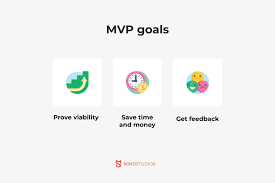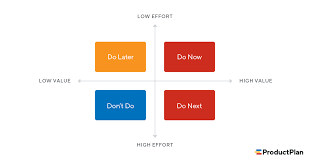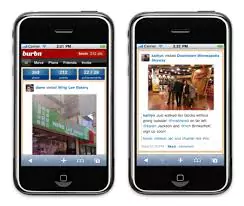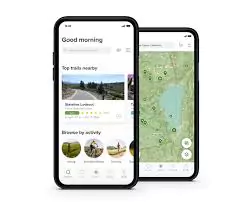Obstacles to MVP Development

Ever had one of those "Why didn't I think of that?" moments when you stumble upon a brilliantly simple idea? Well, the genius behind those ideas often involves a secret weapon: the MVP or Minimum Viable Product.
But the road from idea to MVP isn't always smooth sailing. You guessed it! We're talking about those pesky MVP development obstacles. But wait, what's an MVP?
Eric Ries, the granddaddy of startup lingo, describes an MVP as "that version of a new product which allows a team to collect the maximum amount of validated learning about customers with the least effort."
But for those of us who prefer jargon-free lingo, it's your product's simplest version that still does its job well enough to make early customers happy.
The Purpose and Benefits of an MVP
Ok, so why bother making an MVP? What's in it for you? Let's break it down!
Purpose: Checking Your Assumptions at the Door
The most important reason to develop an MVP? Validating assumptions and gathering user feedback. Imagine putting your heart, soul, and a huge amount of cash into an idea, only to discover that your customers don't need or want it.

Ouch! The MVP development process helps you avoid this disaster.
Let's consider an example - The Rype App. This language-learning platform started as an MVP with a simple goal - to make language learning flexible, convenient, and affordable.
The founder, Sean Kim, tested the waters by creating a landing page to gauge interest. He answered questions on Quora, and within a day, hundreds of people signed up, validating the idea, and kick-starting the MVP journey.

Their initial offering was far from perfect, but they gathered user feedback, improved, and iterated. Today, Rype App has thousands of users worldwide and continues to expand its services based on real user needs and feedback. That's the power of an effective MVP in action!
Benefit #1: Saving Your Wallet
Here's a jaw-dropping stat: 29% of startups crash and burn because they run out of money, according to a survey by CB Insights.
Ouch again!
With an MVP, you can dodge this bullet. You won't over-invest in features that users don't care about. Instead, you'll build what they want, saving some serious dough in the process.
Benefit #2: Having a Chat with Your Customers
Think of MVP development services as a friendly chat with your potential customers. You're asking them, "Hey, what do you think of this?" and then shaping your product based on what they say.
It's about giving the people what they want, instead of what you think they want.
MVP is not all rainbows and unicorns. MVP development obstacles can pop up repeatedly. Getting your MVP feature prioritization right, managing the MVP cost, and making sure your MVP testing is on point - is the most important path from idea to MVP.
Benefit #3: Test-Driving the Market
An MVP lets you test the market before your full-scale product launch. It's like doing a dress rehearsal before the main event - spotting potential snags and fixing them beforehand. This can save a ton of headaches down the line.
Benefit #4: Building Buzz and Securing Funding
An MVP can create a buzz around your idea, helping you attract investors. After all, who doesn't love a success story? With some initial traction and user feedback, you can make a convincing case for your MVP development company.
Feeling overwhelmed by MVP development obstacles? Don't worry Here at F22 Labs, we're all about offering top-tier MVP development services to guide you from idea to MVP, minus the headaches.
Obstacles to MVP Development
Whoever said "The road to success is always under construction" must have known a thing or two about MVP development.
The path from a budding idea to a fully bloomed MVP isn't always a walk in the park. Keep reading to find out the secret map to dodge these MVP development obstacles.
Obstacle #1: Unclear Vision and Objectives
You're all fired up about your product idea. But wait, do you have a clear vision for your MVP? If your answer is "Uhmm not yet," we need to talk about the first of the MVP development obstacles.
Defining a Clear Product Vision
It's like going on a road trip without a map or destination - sounds adventurous, but you'll probably end up lost. A clear product vision is your MVP's GPS - it guides your development process and helps you make informed decisions.
It's not just about creating something cool; it's about creating something that fulfils a need.
Identifying Target Audience and Core Features
Just as important is knowing who you're building for. Is your product for busy moms, fitness freaks, tech geeks, or someone else? Identifying your target audience is key to making an MVP that hits home.
Once you know who you're talking to, it's time to decide what to say - in other words, your core features. These should be the absolute essentials, the things without which your product just wouldn't be itself.
Obstacle #2: Feature Prioritization
With your vision and audience locked down, you're ready to take on the next of the MVP development obstacles: feature prioritization. And let us tell you, this is one tricky balancing act.

Challenges in Determining the Minimum Set of Features
It's a common dilemma - what to include in your MVP and what to leave for later. The key here is to focus on the 'V' in MVP – viable.
Your features need to make your product not only functional but also appealing to your early adopters. But hey, no one said it's easy to pick your MVP's winning features.
Balancing User Needs and Available Resources
And then, there's the big question of how to balance user needs and available resources. It's like being at a buffet with a small plate. You can't possibly fit everything on it! The same goes for your MVP.
With limited time, money, and manpower, you need to choose what goes into your MVP and what doesn’t. And this isn't about just stuffing in as many features as possible; it's about finding that sweet spot between satisfying your users and not breaking the bank.
Obstacle #3: Technical Complexities
Picture this: You've figured out your vision, identified your audience, and even solved feature prioritization. Now you're all set to get your MVP off the ground, right? Well, almost.
But there's still a significant hurdle to cross: the tech stuff. You know, all the ones and zeros that make your product work. And let's be real, it can get pretty tricky.
When you start dealing with technicalities in the MVP development process, it feels like you're learning a new language. Let's decode some of these MVP development obstacles.
Integration of Technologies and External APIs
So, you have this fantastic idea for your MVP - A fitness app that integrates with wearable tech. Sounds cool, right? But here's the catch. How do you make sure your app talks nicely with all those fitness trackers out there? That's where the challenge of integrating technologies and external APIs comes in.
APIs are like translators that allow different technologies to communicate.
For example, if you want your app to display data from a Fitbit or an Apple Watch, you'll need to use their APIs. The tricky part? Each API has its own set of rules. Just imagine trying to communicate with people from different countries, all speaking different languages!
With the right MVP development services, you can overcome these challenges and create a seamless user experience.
Scalability and Security Concerns
Now, let's talk about two of the biggest MVP obstacles that often fly under the radar: scalability and security.
Imagine your MVP becomes a hit overnight (Hey, a startup can dream, right?). Suddenly, you've got thousands, or even millions, of users. Awesome? But can your MVP handle the load? And here's where the concept of scalability steps onto the stage. It's all about guaranteeing your MVP can flex and grow alongside your expanding user base, without any stumbles.
Take the case of an AI language model like ChatGPT. The team behind it launched it with fingers crossed, hoping for a warm reception. And was it a hit? You bet! Users worldwide were quick to jump on board, making it a success overnight.

But here's the twist: the sudden influx of users was more than what the initial infrastructure could handle. The server load skyrocketed, leading to slower response times and, in some cases, the service becoming temporarily unavailable.
The takeaway here? Scalability matters. It's not just about building an MVP that works now, but one that can handle growth in the future. This incident serves as a crucial reminder that while getting your MVP to the market is important, ensuring it can smoothly handle an increase in user load is equally vital.
And this is where MVP development services come into the picture, helping you build an MVP that's not just viable, but scalable too.
And then, there's security. With cyber threats at every corner, protecting your users' data is not just a nice-to-have; it's a must. You wouldn't want your MVP to make headlines for the wrong reasons, would you?
Luckily, a solid MVP development company can help you address these concerns, ensuring that your MVP is not just viable, but also scalable and secure.
Obstacle #4: Resource Limitations
Remember how we said MVP development is like a road trip? Well, just like you can't travel on a cross-country drive without checking your gas and cash, you can't dive into MVP development without assessing your resources.
Managing Time, Budget, and Human Resources
Running against the clock, watching your budget, and coordinating your team - it's all part of the MVP development game.
Time is one resource you can't afford to waste. Sure, you want your MVP out there ASAP but rushing can lead to oversights that cost more time in the long run. And then there's the budget. Managing MVP cost is like walking a tightrope. You want to build the best MVP possible, but not at the expense of running your bank account dry.
And of course, there's your team. Every member has their strengths and limitations. Balancing these to ensure your MVP is top-notch, now that's a challenge.
Efficient Project Management and Prioritization
But managing resources isn't just about blocking the punches thrown by MVP development obstacles. It's also about having an aggressive game plan - assigning importance to tasks, dividing the work efficiently, and keeping your MVP development process smooth sailing.
With several tasks to handle - from design to coding to testing - prioritizing becomes crucial. Think of it like whipping up a fancy dinner. You can't chop veggies, stir the sauce, and roast the chicken all at once, can you? You need to decide the order of operations - what comes first, what follows, and so on. That's what prioritizing in the face of MVP development obstacles is all about.
Consider the example of SpaceX, Elon Musk's ambitious venture. SpaceX's goal wasn't just bold; it was borderline outrageous - making space travel as common as air travel. Now, that's a monumental task with an almost endless list of things to do. So how did SpaceX handle it?
They used efficient project management and prioritization.

Instead of trying to tackle everything at once, they broke down their vision into manageable milestones - first, develop a reliable and reusable rocket (the Falcon 1), then, transport cargo to the International Space Station (Dragon spacecraft), and so on.
Every step was a project in itself, and each project was managed with clear objectives, timelines, and assigned tasks. And while there were setbacks, this approach allowed SpaceX to achieve its goals one at a time without being overwhelmed by the magnitude of its vision.
Let's not forget that a well-balanced project not only keeps the MVP development process on track but also makes sure that time, budget, and human resources are used wisely.
Obstacle #5: User Feedback and Validation
You've built an MVP that you're proud of. It's time to take it for a spin and see what users think. But gathering meaningful feedback and validating your MVP can be as tricky.
Here's why:
Obtaining Meaningful Feedback from a Limited User Base
Getting feedback is easy. But getting actionable feedback? Now that's a challenge. Especially when you're dealing with a limited user base.
Think about it. You've just launched your MVP. It's fresh off the assembly line, and your user base is just starting to grow. Every piece of feedback can sway your perspective significantly. But what if the feedback isn't representative of your target audience? It's like trying to predict the plot of a movie based on the trailer.
Not so accurate, is it?
Remember the initial version of Instagram? It started as Burbn, a check-in app with a plethora of features. The founders noticed that users loved one feature in particular - photo sharing.

So, they focused solely on that feature and rebranded it as Instagram. They obtained meaningful feedback, acted on it, and, well, the rest is history.
Identifying the Right User Group and Incentivizing Feedback
Even when you manage to get feedback, another challenge creeps in making sure it's coming from the right users. And of course, getting users to take time out and provide feedback isn't always easy.
But here's the thing, you're not just looking for any feedback. You want insight from people who represent your target audience. That's like trying to catch a specific fish in the middle of the ocean.
Obstacle #6: Iterative Development
Remember when we said that MVP development isn't a straight path? Well, it's more like a spiral, circling the same points but moving upwards. This is what we call iterative development.

Shifting from Linear Development to an Iterative Mindset
Traditionally, product development was linear - you had a plan, and you followed it step by step until you reached the end. But with MVPs, things work a bit differently.
MVP development is more like creating a sculpture. You start with a basic shape (your MVP) and then refine it, bit by bit, based on feedback. You're not just creating a product; you're continuously improving it.
Take the case of AllTrails, a hiking trail discovery app. Its MVP started merely as a database of trails. Over time, through iterative improvements based on user feedback, they introduced features like trail reviews, offline maps, and more.

Today, it's a must-have app for outdoor enthusiasts.
Importance of Continuous Improvement and Adaptation
Iterative development doesn't just make your product better; it also makes it resilient. In a rapidly changing market, the ability to adapt is key.
Whether it's a new competitor, a change in user preferences, or even a global pandemic (remember 2020?), an iterative mindset allows you to pivot and keep your MVP relevant.
Obstacle #7: Time Constraints
Tick tock, tick tock, do you hear that? That's the sound of the next big MVP development obstacle: time constraints. We're all racing against the clock, but it's all about how you manage the race.
Delivering an MVP within a Specific Timeframe
One of the biggest MVP development obstacles is getting your MVP out there before the window of opportunity closes. You're racing against the clock, competing with other startups, and trying to meet your deadlines.
Managing Time Effectively and Focusing on Essential Features
How do you win this race? Through smart time management and MVP feature prioritization. It's about identifying what's vital for your MVP and focusing on those features first.

Remember Peek, the tour booking platform? Initially, it had an extensive list of features, but the team realized users loved the tour booking feature the most. So, they decided to focus on that, refining and perfecting it, leading to an MVP that resonated with users worldwide.
Obstacle #8: Quality Assurance
Quality assurance is our secret weapon in the fight against MVP development obstacles. If MVP development were a game, quality assurance would be the watchdog, making sure everything is up to par and in working order.
Testing and Ensuring the Quality of the MVP
Alright, so we've talked a lot about building the MVP, but there's an essential part we can't ignore—making sure it works the way it should. Quality assurance is sort of like the final quality check before a product hits the shelves.
It's about taking your MVP on a tough fitness test, spotting any weaknesses, and strengthening them. It's about looking for bugs (those pesky little problems that can make things go haywire) and fixing them. And then, just for good measure, we test it all over again.
Remember that cool meditation app, Headspace? Its MVP was filled with unique features to make meditation easy for everyone. But without thorough testing and quality assurance, those features would have just been good ideas on paper. Through rigorous quality checks, they turned those ideas into a functional, reliable app loved by millions.
So, when we're talking MVP development obstacles, never underestimate the power of quality assurance.
Balancing Speed and Quality in the Development Process
In the fast-paced world of startups, speed is crucial. But when speed becomes the enemy of quality, that's when problems creep in. It's like baking a cake - you can't just increase the temperature of the oven to bake it faster. You'll end up with a burnt cake.
The MVP development process is a delicate balance between speed and quality. And finding that balance is crucial in overcoming these MVP development obstacles.
Obstacle #9: User Experience (UX) Design
We've hit upon another crucial factor—user experience (UX) design. Picture this: your MVP is jam-packed with ground-breaking features but users find it as tricky as a Rubik's cube.

Ouch! Not quite the user reaction we were hoping for, right?
Creating a Seamless and Intuitive User Experience
UX design is all about making your MVP user-friendly. It's about intuitive layouts, seamless navigation, and visually appealing designs.

Think about Evernote, the note-taking app. It wasn't the first, but what set it apart was its intuitive UX design. It made note-taking simple, efficient, and fun, leading to a loyal user base worldwide.
Understanding User Expectations and Conducting Usability Tests
To create a stellar MVP UX design, you need to understand your users. Conduct usability tests, gather feedback, and use that feedback to refine your design.
In the MVP development process, UX design plays a critical role. Without it, even the best ideas can fall flat.
Whether it's meticulous quality checks or empathetic UX design, these MVP development obstacles are part and parcel of the journey from idea to MVP. But with the right approach and the assistance of an expert MVP development company like F22 Labs, you can tackle these obstacles and come out on top.
Obstacle #10: Marketing and User Adoption
It's time to face the last of our MVP development obstacles: marketing and user adoption. You've baked a delicious MVP cake, but how do you get people to taste it and ask for seconds?

Launching the MVP Successfully and Gaining Traction
A successful launch is all about hitting the ground running. And gaining traction? That's about keeping the momentum going.
Do you remember how Slack emerged on the scene? It was a new player in a crowded market. Yet, through a successful launch and continuous marketing efforts, it quickly gained traction and is now a go-to tool for team communication.
Effective Marketing Strategies and User Acquisition
This is where a solid marketing strategy comes into play. It's all about reaching the right audience, at the right time, with the right message. But wait, it's not just about reaching them; it's about converting them into users, too.
Check out how Canva did it. It leveraged social media and influencer marketing, offering simple design solutions to non-designers. This effective marketing strategy helped them acquire millions of users globally.
Conclusion
Remember, MVP development is a journey, not a destination. It’s all about embracing these challenges, learning from them, and emerging stronger.
Feeling a little overwhelmed?
It's okay, champ. Even the best athletes have a coach, right? With the right partner, you won't have to do it alone.
Whether you're stuck at MVP feature prioritization, technical complexities, or wondering about the MVP cost, F22 Labs is here to help. Our MVP development services are designed to guide you through these hurdles. Let’s hit this road together!
How about we kick off with a 1-hour free consultation? Book your slot now, and let's turn that great idea into a fantastic MVP.
Ready? Let's do this!
